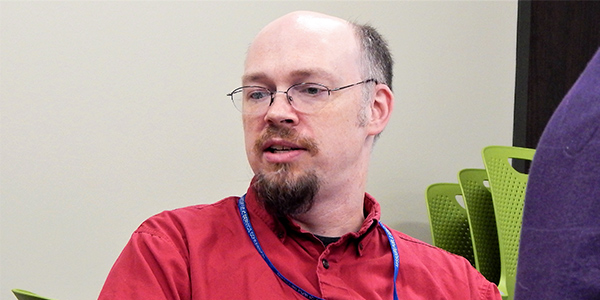SPP and MISO are finalizing evaluations of potential interregional projects and determining whether any can be mutually beneficial, SPP staff told the Seams Steering Committee last week.
However, it appears the 2019 Coordinated System Plan (CSP), which has been revamped to study seams transmission issues previously identified in the RTOs’ regional planning processes, will be unable to identify any interregional projects. Two previous CSPs, conducted under different processes, failed to select interregional projects as well.
SPP Interregional Coordinator Adam Bell told the SSC on Wednesday that both parties have evaluated more than 50 potential interregional projects and shared possible solutions to resolve joint needs.
But only one project with noted issues by both RTOs’ regional processes is still being analyzed. Three other projects with seams needs in either SPP’s 2019 Integrated Transmission Planning (ITP) study or MISO’s 2019 Transmission Expansion Planning (MTEP) process are still being evaluated.
The 2019 CSP marks the first study since the RTOs agreed to revise the process last year. A proposal to remove a joint modeling requirement in favor of individual regional analyses and other changes to the MISO-SPP joint operating agreement was filed with MISO, SPP to Ease Interregional Project Criteria.)
Initial stakeholder feedback was underwhelming.
“I’m just worried we’ll be stuck in this situation every time we do one of these things going forward,” Advanced Power Alliance’s Steve Gaw said. “The problem has always been the regional model.”
“Different results [from adjusted production cost (APC) calculations] were not an unanticipated outcome. This is exactly what we were afraid of,” the Missouri Public Service Commission’s Adam McKinnie said. “This should be something that both sides come up with an agreement on, yet we’re back to the same process when we get to joint planning.”
Jeff Knottek, planning director at City Utilities of Springfield (Mo.), pointed to the Neosho-Riverton flowgate along the Kansas-Missouri border, a frequent constraint that has accounted for 40.8% of the market-to-market settlements between the RTOs ($26.9 million of $66.1 million since March 2015).
The congested flowgate was identified as a CSP joint need by both regional planning processes, but MISO’s MTEP 19 results show negative or insignificant APCs, Bell said. None of the more than 25 solutions is being considered for approval in the CSP, he said. SPP is still regionally evaluating the flowgate.
“Obviously, [MISO’s planning models] aren’t reflecting operational reality,” Knottek said. “The $26 million, almost $27 million on this one flowgate is not getting MISO’s attention. Where do we go?”
“The joint planning process is absolutely an avenue we should look at it for addressing seams needs,” Bell said. “SPP is showing significant benefits from resolving Neosho-Riverton. SPP is showing benefits to SPP for doing that.”
“SPP needs to fix it, but I don’t think we should pay for it ourselves,” Knottek responded.
Bell said the conversation needs to be held at the RTOs’ next Interregional Planning Stakeholder Advisory Committee meeting on July 31.
The lack of interregional projects between SPP and MISO is also likely to be a subject of conversation when the Seams Liaison Committee meets July 21 in Indianapolis during the National Association of Regulatory Utility Commissioners’ Summer Policy Summit. The committee, composed of state regulators in both RTOs, is trying to improve the grid operators’ interregional coordination.
M2M Settlements Reach $66M in SPP’s Favor
MISO racked up a $3.6 million tab in May’s market-to-market (M2M) settlements with SPP, pushing its overall bill to $66.1 million. It was the eighth-highest total for a month since the RTOs began the M2M process in March 2015.
Five permanent flowgates accounted for nearly $2.7 million of the total, binding for 315 hours. Temporary flowgates were binding for 835 hours, resulting in a $914,000 settlement to SPP.
An operations congestion management task force under the Operating Reliability Working Group has begun a general review of flowgates, “driven by a desire to better our practices,” SPP’s Will Ragsdale said.
The group is also looking at M2M power swings, he said, with the “main resolution” being updating the M2M software.
— Tom Kleckner





